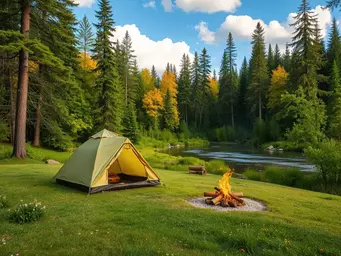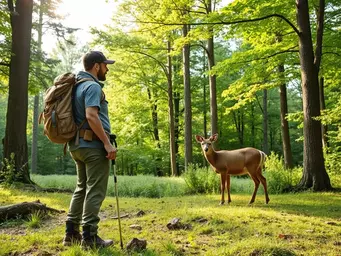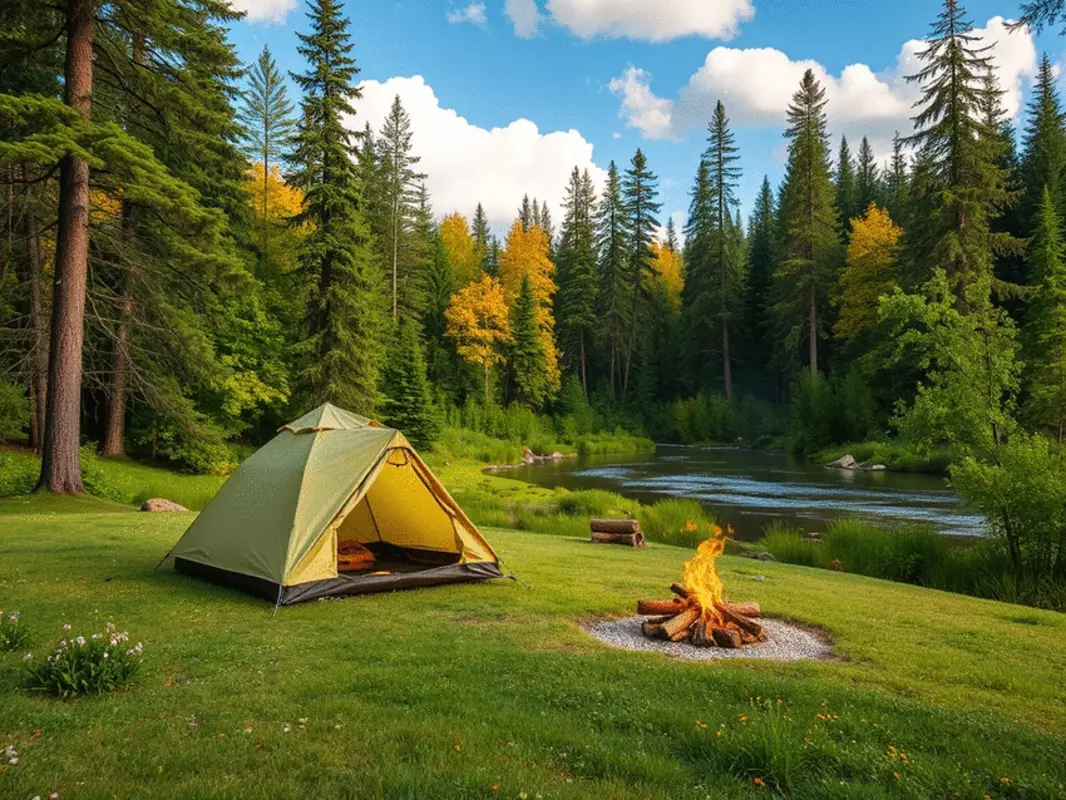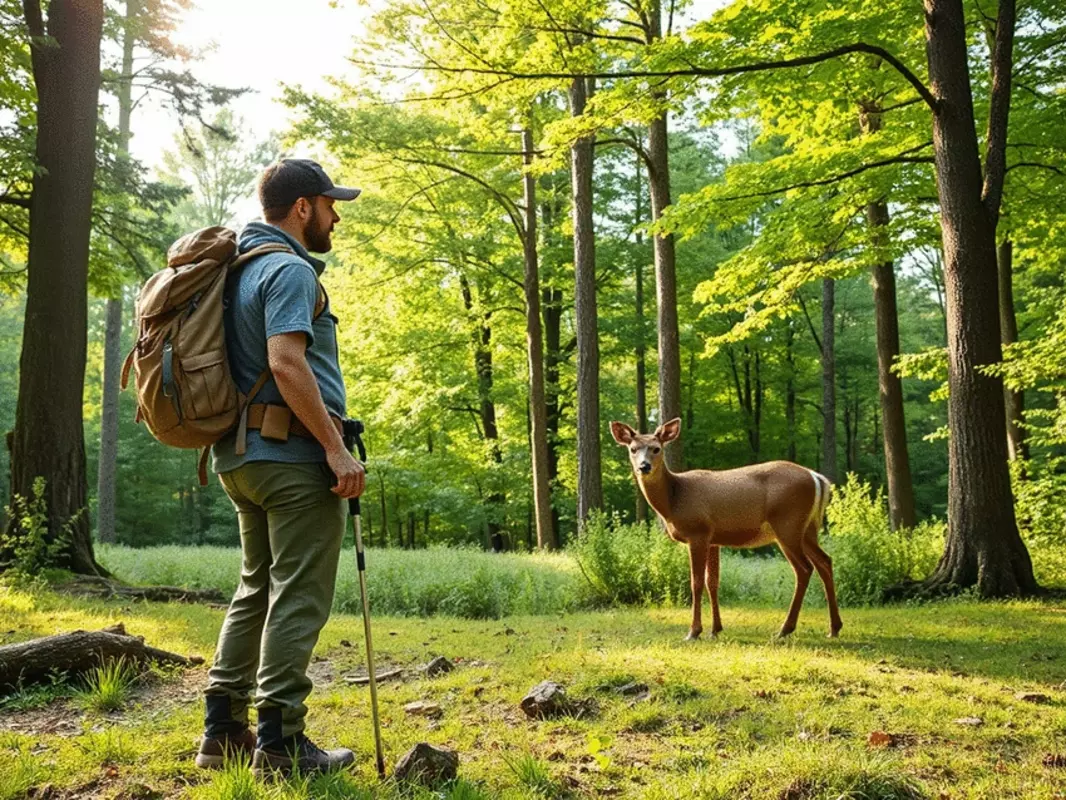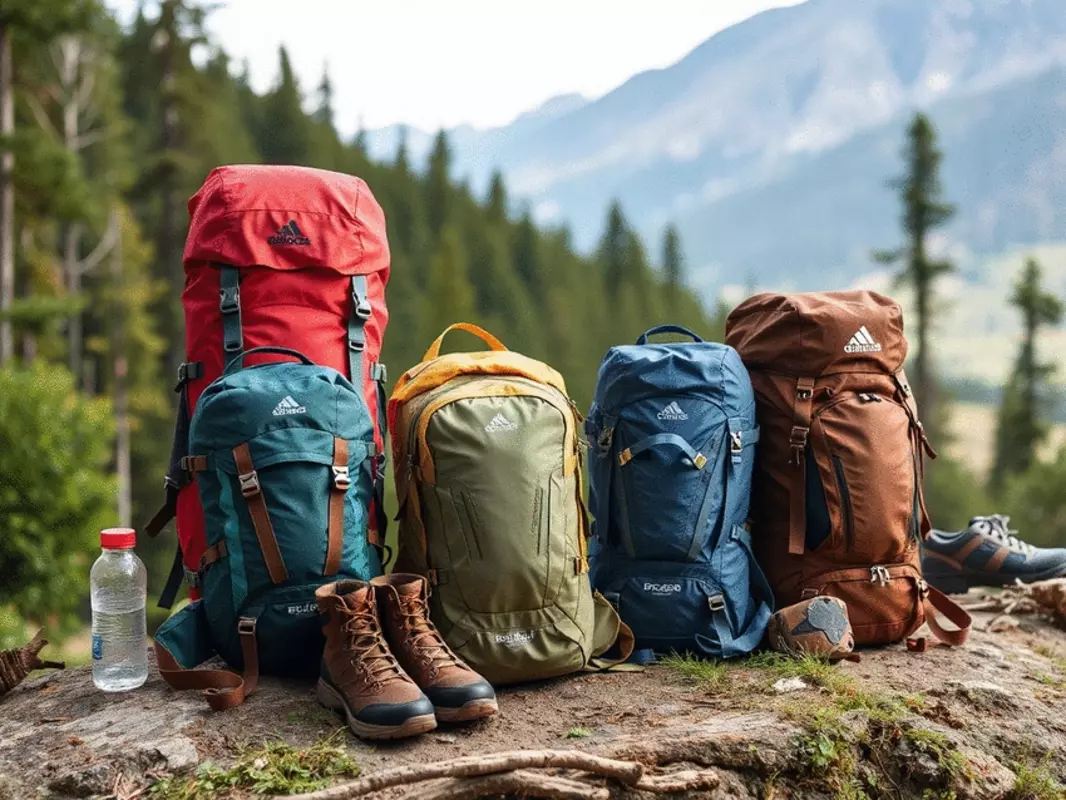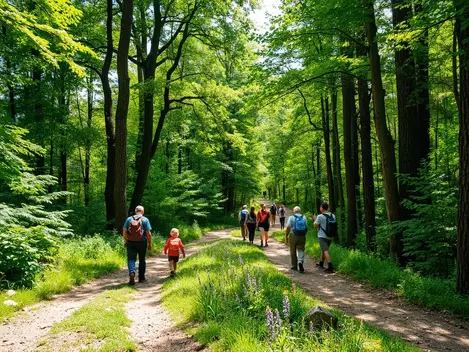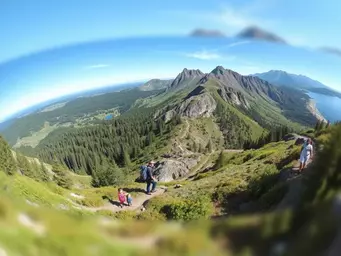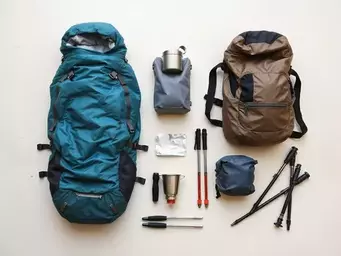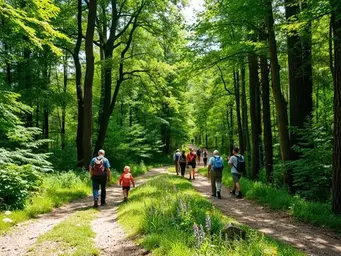Selecting the Right Hiking Trail
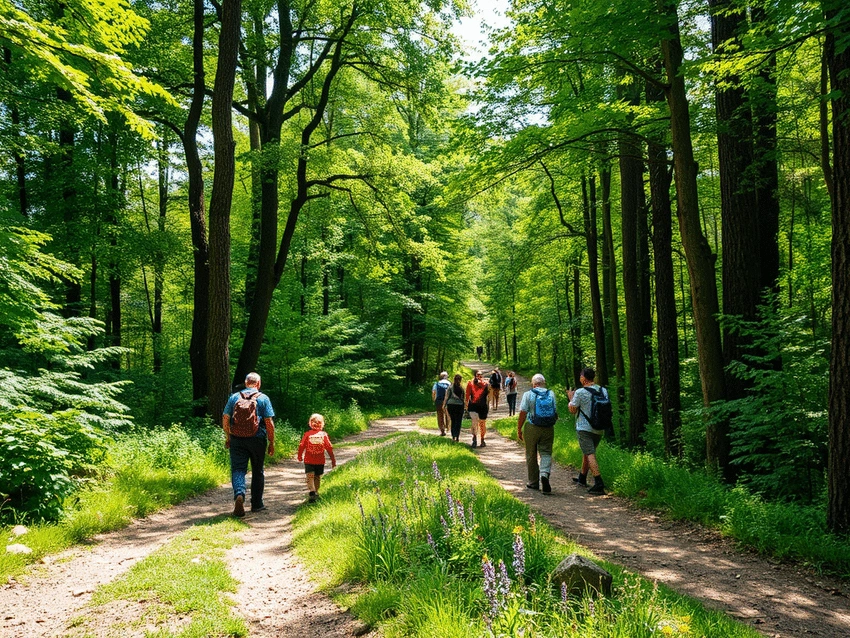
How well do you know your hiking abilities? Understanding your hiking skill level and personal interests can significantly enhance your outdoor adventures. Dive into this guide to discover how to select trails that resonate with you!
What You Will Learn
- Evaluate your physical fitness to choose trails that match your stamina and strength.
- Reflect on your hiking background to identify experiences and challenges you enjoy.
- Select trails based on your scenic preferences, whether they are mountain views or serene forests.
- Prioritize safety and preparation by checking trail conditions and packing essential gear.
- Practice responsible hiking by respecting nature and following trail etiquette.
- Enhance your ecosystem awareness to better understand and protect the environments you explore.
- Engage with local hiking clubs and online communities to discover new trails and share experiences.
Key Aspects of an Enjoyable Hiking Experience
Aligning your hiking abilities with personal preferences creates a fulfilling outdoor experience. The visual below highlights the core elements to consider for a safe and enjoyable journey on the trails.
Assessing Fitness & Experience
- Cardio endurance
- Leg strength
- Hiking background
Recognizing Personal Interests
- Scenery preferences
- Wildlife encounters
- Cultural attractions
Safety & Preparation
- Trail conditions
- Essential gear
- Route planning
Responsible Practices
- Leave no trace
- Stay on marked trails
- Ecosystem awareness
Understanding Your Hiking Skill Level and Interests
Before you hit the trails, it’s essential to understand your hiking skill level and interests. This knowledge will not only help you choose the right trails but also enhance your overall outdoor experience. I always start by assessing where I stand physically and what I enjoy about hiking—after all, every adventure should feel like a personal journey!
As I’ve explored various terrains over the years, I’ve learned that evaluating our individual capabilities is key. Let's delve into how to assess your fitness and experience.
Assessing Your Current Fitness and Experience
First things first: let’s evaluate your physical fitness for hiking. This doesn’t mean you need to be an athlete, but knowing your stamina and strength will help you pick trails that suit you.
Evaluating Physical Fitness for Hiking
- Consider your cardio endurance—can you walk briskly for 30 minutes without getting too tired?
- Assess your leg strength—try climbing a flight of stairs or hiking a small hill.
- Think about your flexibility—do you have any issues reaching for your backpack or bending down?
By understanding these aspects, you can select hikes that match your physical abilities and gradually work your way up to more challenging trails. Research suggests that regular physical activity, including hiking, significantly improves overall fitness and well-being, preparing your body for diverse outdoor conditions.

Identifying Your Hiking Background and Experience
Your hiking background plays a significant role in shaping your trail choices. Have you hiked before? What types of trails have you enjoyed? Reflecting on these experiences will guide you toward future hikes that excite you.
- List any hikes you’ve completed: consider the difficulty, length, and scenery.
- Think about what you enjoyed most—was it the sense of challenge, the views, or perhaps the wildlife encounters?
- Evaluate any skills you’ve picked up, like navigation or outdoor cooking, that could enhance your hiking adventures.
These reflections can help tailor your hiking plans to suit what you genuinely enjoy!
Recognizing Personal Interests in Hiking
Next, let’s dive into your personal interests. Knowing what excites you about hiking can make your outdoor experiences more fulfilling. For instance, are you captivated by scenic vistas, or do you prefer intriguing wildlife?
Choosing Trails Based on Scenery Preferences
- Mountain trails often offer breathtaking views and challenging climbs.
- Forest paths provide a serene atmosphere filled with the sounds of nature.
- Lakeside hikes can be calming while offering opportunities for picnicking or photography.
When you pick trails that resonate with your preferred scenery, each hike becomes a memorable adventure! I always make it a point to explore new landscapes that speak to me.
Exploring Wildlife Encounters and Cultural Attractions Along Trails
Another aspect to consider is the opportunity for wildlife encounters and cultural attractions along your hike. Many trails offer unique experiences that can enrich your journey.
- Research trails known for specific wildlife, like birdwatching or deer spotting.
- Look for trails that lead to historical sites or cultural landmarks.
- Consider paths that feature local flora and fauna—learning about them adds depth to your hike!
By aligning your interests with your chosen trails, you’ll discover the magic that the great outdoors has to offer—and I can’t wait to hear about your adventures!
Pro Tip
As you assess your hiking skill level, consider setting up a training plan that includes a mix of cardio, strength training, and flexibility exercises. This not only prepares your body for the trails but also boosts your confidence as you tackle more challenging hikes!
Frequently Asked Questions About Hiking Trail Selection
Here are some common questions to help you better understand how to choose the right hiking trail:
- How do I assess my physical fitness for hiking?
- Evaluate your cardio endurance (can you walk briskly for 30 minutes?), leg strength (can you climb stairs or a small hill?), and flexibility. This helps match trails to your physical capabilities.
- Why is my hiking background important?
- Reflecting on past hikes helps you identify what you enjoyed (difficulty, scenery, wildlife) and what skills you've acquired, guiding you toward fulfilling future adventures.
- How do scenery preferences impact trail selection?
- Choosing trails with scenery you prefer (mountains, forests, lakesides) makes each hike more enjoyable and memorable, aligning with your personal aesthetic.
- What role do wildlife encounters and cultural attractions play?
- Trails offering unique wildlife viewing or historical sites can enrich your journey, adding depth and educational value to your outdoor experience.
- What are the non-negotiables for hiking safety?
- Always check trail conditions, pack essential safety gear (like a first aid kit), plan your route, and inform someone of your hiking plans and estimated return time.
- What are some responsible hiking practices?
- Practice Leave No Trace principles, stay on marked trails, yield to others, and observe wildlife from a distance to protect the environment.
Summarizing Key Takeaways for Trail Selection
As I reflect on my hiking journeys, it becomes clear that understanding your skills and interests is crucial when choosing a trail. By aligning your hiking abilities with your personal preferences, you're setting the stage for a more enjoyable experience. Here are some key takeaways to keep in mind:
- Assess your fitness level honestly to choose the right trail.
- Consider what type of scenery and wildlife excite you the most.
- Be aware of trail difficulty ratings and what they mean for your hike.
- Prioritize safety and preparation with the right gear and knowledge.
By integrating these factors into your planning process, you can create a hiking experience that is not only safe but also deeply fulfilling. Remember, the goal is to enjoy your time in nature, so make choices that resonate with you!
Safety and Preparation as Non-Negotiables in Hiking
No matter how skilled or experienced you are, safety should always come first. I've learned from my own adventures that taking the time to prepare can make all the difference. Here are some safety measures to consider:
- Check the trail conditions before heading out.
- Always pack essential safety gear like a first aid kit.
- Plan your route with a trusted map or GPS app.
- Inform someone about your hiking plan and estimated return time.
Preparation isn’t just about gear; it's also about mental readiness. Get acquainted with potential challenges and adjust your plans accordingly. When I first started hiking, I was surprised at how much safety knowledge transformed my experience in the wild! For more comprehensive guidelines on outdoor safety, resources like academic studies on sustainable outdoor recreation provide valuable insights into safe practices.

Encouraging Responsible Hiking Practices
Promoting Respect for Nature and Trail Etiquette
As we venture into the great outdoors, let’s remember to practice responsible hiking. Respecting nature is vital not only for our own enjoyment but also for preserving these beautiful landscapes for future generations. Here are some key etiquette tips:
- Leave no trace: pack out what you bring in.
- Stay on marked trails to protect vegetation.
- Yield the trail to others, especially those on foot.
- Observe wildlife from a distance.
In my experience, it’s the little things we do that can have a significant impact on our environment. Adopting these practices can enhance our connection to nature and contribute to its preservation. Understanding the motivations behind sustainable tourism behaviors, such as those discussed in environmental journals, further emphasizes the importance of these practices.
Understanding Environmental Impact and Ecosystem Awareness
Understanding our impact on the environment is essential for every hiker. When exploring, it's crucial to be mindful of the ecosystems we traverse. Here’s how you can enhance your ecosystem awareness:
- Educate yourself on local flora and fauna.
- Be cautious of invasive species and avoid spreading them.
- Support conservation efforts by participating in local clean-up activities.
My hikes are often punctuated by a sense of wonder about the ecosystems around me. If we all play our part in protecting these environments, we ensure that they remain vibrant and thriving for years to come.
Next Steps: Finding Your Ideal Hiking Trail Through Local Hiking Clubs and Online Forums
Now that you’re equipped with the knowledge of trail selection, why not dive deeper? Connecting with fellow hikers can be a fantastic way to discover new trails and share experiences. Consider these next steps:
- Join local hiking clubs for group hikes and expert advice.
- Engage in online forums to get recommendations and tips.
- Participate in community events focused on outdoor education.
At Backpack Hiking, we’re all about building a community of outdoor enthusiasts. Together, we can share knowledge, experiences, and the best hiking spots that keep our adventurous spirits alive! Let's explore the trails together, fostering a love for nature while ensuring its preservation. Happy hiking!
Recap of Key Points
Here is a quick recap of the important points discussed in the article:
- Assess your fitness level honestly to choose the right trail.
- Reflect on your previous hiking experiences and what you enjoyed.
- Choose trails that match your scenery and wildlife interests.
- Prioritize safety and preparation with the right gear and knowledge.
- Practice responsible hiking by respecting nature and following trail etiquette.
- Engage with local hiking clubs and online forums for recommendations and support.
